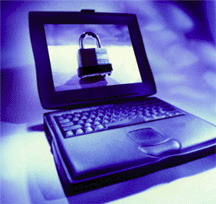Info Security Firms and Their Antivirus Software Monitored (Hacked?) by NSA, GCHQ
7:03 am – Popular Security Software Came Under Relentless NSA and GCHQ Attacks (The Intercept)
7:12 am – US and British Spies Targeted Antivirus Companies (WIRED)
9:48 am – Spies are cracking into antivirus software, Snowden files reveal (The Hill)
12:18 pm – GCHQ has legal immunity to reverse-engineer Kaspersky antivirus, crypto (Ars Technica-UK)
12:57 pm* – US, UK Intel agencies worked to subvert antivirus tools to aid hacking [Updated] (Ars Technica)(*unclear if this is original post time or time update posted))
~3:00 pm – NSA Has Reverse-Engineered Popular Consumer Anti-Virus Software In Order To Track Users (TechCrunch)
(post time is approximate as site only indicates rounded time since posting)
The question I don’t think anyone can answer yet is whether the hack of Kaspersky Lab using Duqu 2.0 was part of the effort by NSA or GCHQ, versus another nation-state. I would not be surprised if the cover over this operation was as thin as letting the blame fall on another entity. We’ve seen this tissue paper-thin cover before with Stuxnet.
For the general public, it’s important to note two things:
— Which firms were not targeted (that we know of);
— Understand the use of viruses and other malware that already threaten and damage civilian computing systems only creates a bigger future threat to civilian systems.
Once a repurposed and re-engineered exploit has been discovered, the changes to it are quickly shared, whether to those with good intentions or criminal intent. Simply put, criminals are benefiting from our tax dollars used to help develop their future attacks against us.
There’s a gross insufficiency of words to describe the level of shallow thinking and foresight employed in protecting our interests.
And unfortunately, the private sector cannot move fast enough to get out in front of this massive snowball of shite rolling towards it and us.
EDIT — 5:55 pm EDT —
And yes, I heard about the Polish airline LOT getting hit with a DDoS, grounding their flights. If as the airline’s spokesman is correct and LOT has recent, state-of-the-art systems, this is only the first such attack.
But if I were to hear about electrical problems on airlines over the next 24-48 hours, I wouldn’t automatically attribute it to hacking. We’re experiencing effects of a large solar storm which may have caused/will cause problems over the last few hours for GPS, communications, electricals systems, especially in North America.
EDIT — 1:15 am EDT 23JUN2015 —
At 2:48 pm local time Christchurch, New Zealand’s radar system experienced a “fault” — whatever that means. The entire radar system for the country was down, grounding all commercial flights. The system was back up at 4:10 pm local time, but no explanation has yet been offered as to the cause of the outage. There were remarks in both social media and in news reports indicating this is not the first such outage; however, it’s not clear when the last fault was, or what the cause may have been at that time.
It’s worth pointing out the solar storm strengthened over the course of the last seven hours since the last edit to this post. Aurora had been seen before dawn in the southern hemisphere, and from northern Europe to the U.S. Tuesday evening into Wednesday morning. It’s possible the storm affected the radar system — but other causes like malware, hacking, equipment and human failure are also possibilities.

![[NSA slide indicated info sec AV firms targeted for surveillance]](https://www.emptywheel.net/wp-content/uploads/2015/06/AV-companies_targed_22JUN2015-300x223.png)
